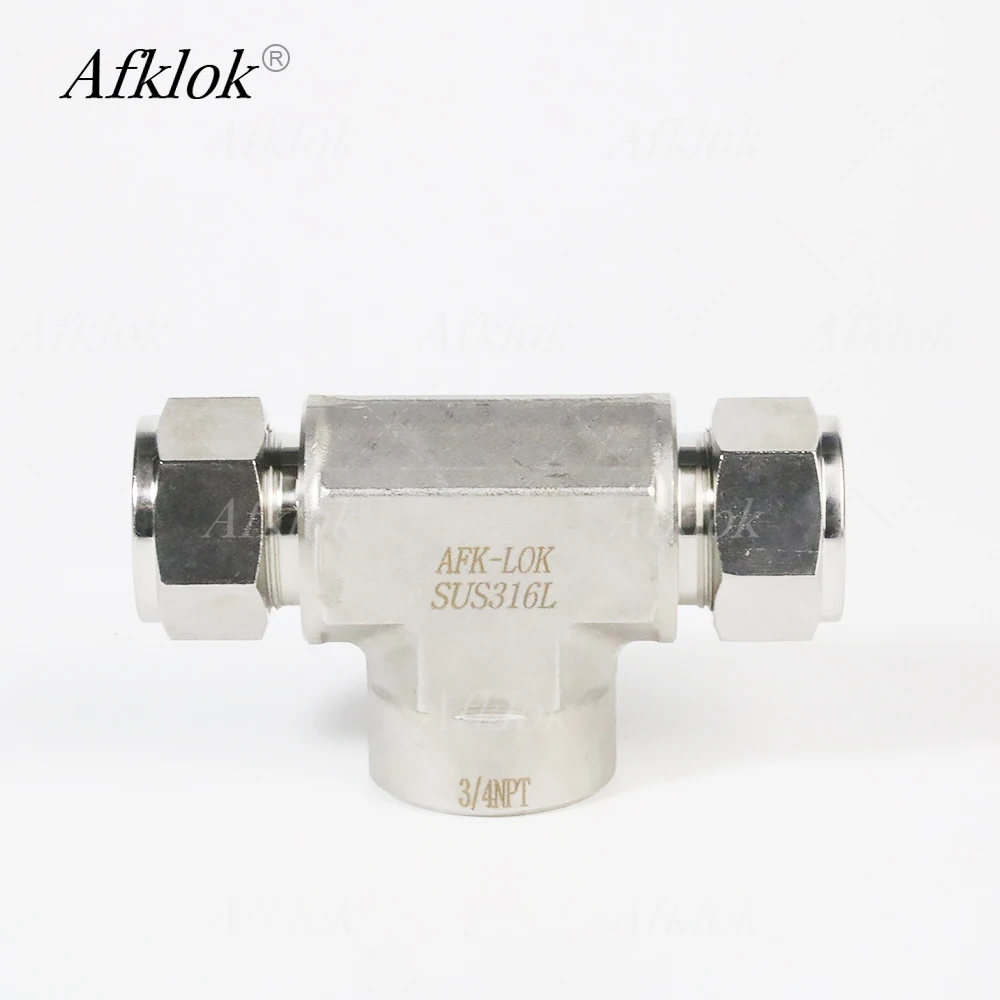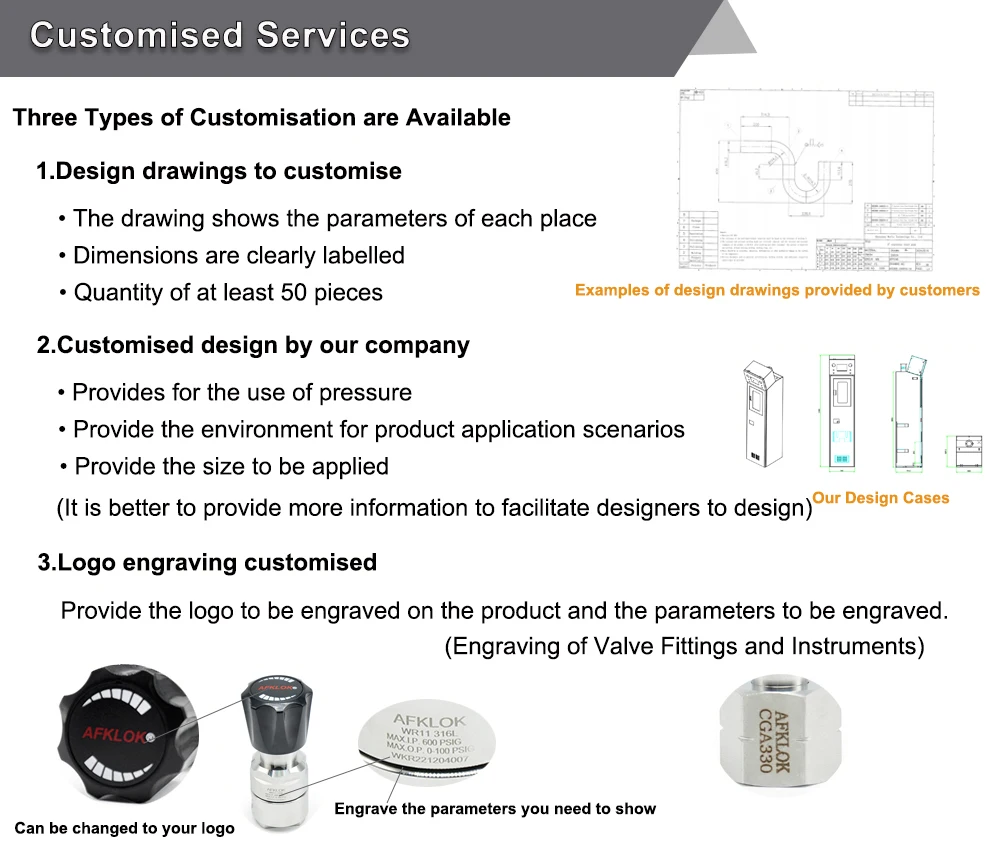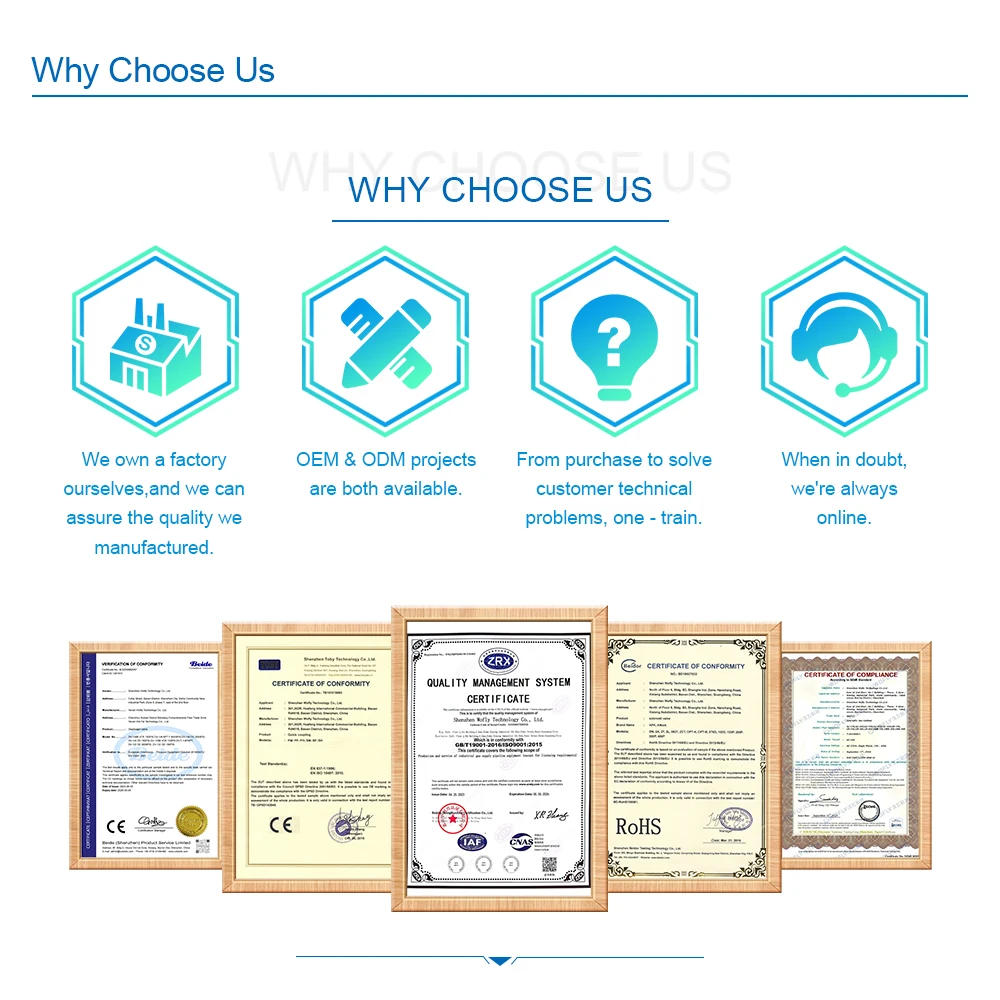Top Sale 3/4in Ferrule to 3/4in Ferrule to 3/4in Female Stainless Steel 316L Tee Forged Fittings
The main performance characteristics of ferrule to female branch tee fitting:
1. It has good sealing and can effectively prevent fluid leakage. The close fit between the ferrule and the pipe and the internal threaded connection ensure the reliability of the connection.
2. Good pressure resistance, able to withstand a certain pressure. Different specifications of the joints have different pressure resistance, which can be selected according to the actual demand.
3. Various materials, common stainless steel, copper, etc., with corrosion resistance, high temperature resistance and other characteristics, suitable for different working environments.
 |
Female Branch Tee
Type:FBT 1212N
Size:3/4″OD to 3/4″OD to 3/4″NPT F Type:FBT 1612N
Size:1″OD to 1″OD to 3/4″NPT F
Type:FBT 1616N
Size:1″OD to 1″OD to 1″NPT F Material:SS316
Work Pressure:3000psi
|


FAQ
Q: How to choose the right fitting according to the actual demand?
A: First of all, we should determine the size and pressure level of the pipe to be connected. If it is used for high-pressure system, the fitting with good pressure resistance should be selected. At the same time, consider the connection method and the use environment, for example, whether it needs special performance such as corrosion resistance and high temperature resistance.
Q: What do I need to pay attention to when installing?
A: Before installation, make sure the pipe ends are clean and free of burrs so as not to affect the sealing effect. Follow the correct installation sequence, generally install the ferrule on the pipe first, then tighten the joint. Pay attention to moderate strength during installation to avoid over-tightening or over-loosening.
For fittings with specific installation directions, install them according to the markings to ensure the correct direction of fluid flow.
Q: What problems may occur during use and how to solve them?
A: Leaks may occur. If leaks are detected, first check to see if the installation is correct and if the ferrules are damaged. If the ferrules are damaged, they should be replaced promptly. In addition, leakage may be caused by piping vibration or pressure fluctuation, which can be solved by taking measures such as reinforcing the piping and installing a vibration-damping device.
- The fittings may be clogged. This may be caused by impurities or foreign matter in the pipeline. The joint can be disassembled for cleaning, or a filter can be installed at the pipe inlet to prevent impurities from entering.
Q: What are the advantages compared with other types of joints?
A: Compared with welded joints, it is easy and quick to install, without professional welding equipment and technology. At the same time, it is easy to disassemble and repair.
Compared with threaded joints, the ferrule connection is more solid and has better sealing performance.
Compared with other connection methods, ferrule to female branch tee fittings can achieve the conversion of different connection methods, increasing the flexibility of the system.
Q: How do I perform routine maintenance?
A: Regularly check the connection of the fitting to ensure that there is no looseness, leakage and other problems. If problems are found, they should be dealt with promptly.
For joints that are not used for a long time, you can apply anti-rust oil on their surface to prevent rusting.
Q: How do I replace a damaged fitting?
A: Firstly, close the relevant valves and stop the fluid delivery. Then disassemble the damaged fitting and clean the end of the pipe. Select a suitable new fitting and install it according to the correct installation method. Test after installation to ensure there are no leaks or other problems.













